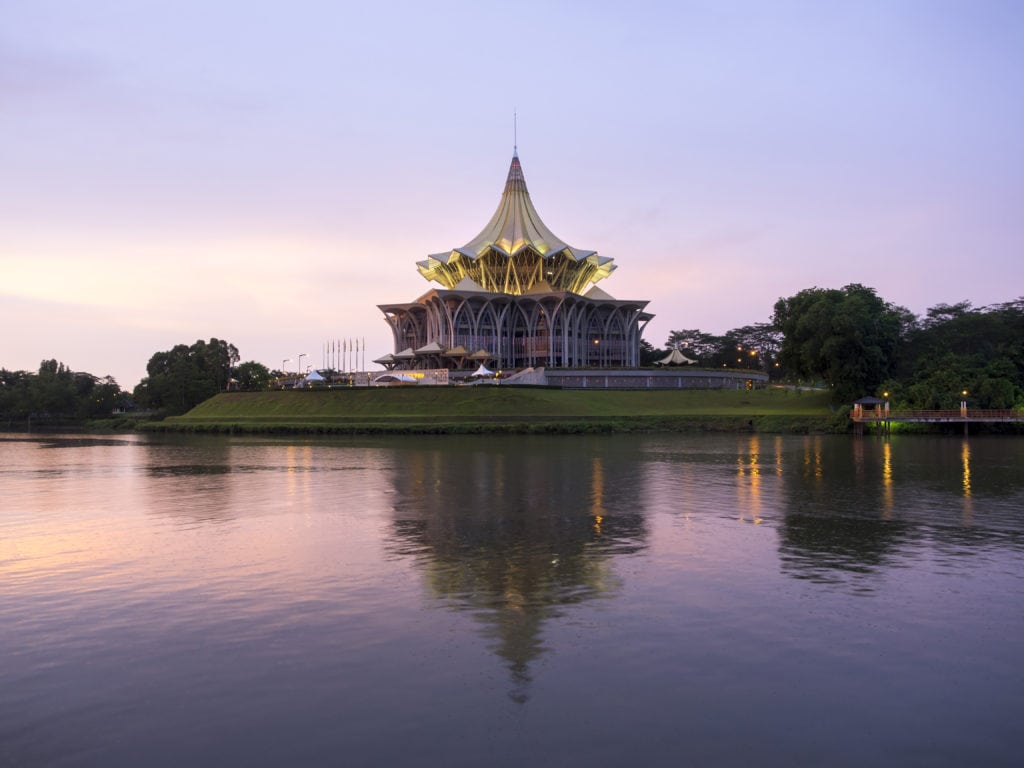
The upstream global oil and gas industry is currently in crisis due to “low oil price shock”.
Further to my last article on my research about the impact of low oil prices since mid-2014 (Global Oil Prices: Implications for Australia and Malaysia), the research is continuing using case study material gathered in Malaysia in February 2016 about an offshore gas project in Malaysia. My collaborative research is looking into revenue and fiscal policy implications for the Malaysian Government.
The Sarawak Gas Project is a multi-phase gas production project located in waters offshore of Bintulu in Sarawak, Malaysia. The question is how is the project faring through the low oil price shock, given oil prices were US$110 a barrel in July 2014 and have since been in free-fall down to the current US$38 a barrel.
Some of the strategic actions for the project’s survival and government tax implications also need to be considered.
The gas project is operated by Murphy Oil Corporation, a multi-national oil company. Murphy Oil is a global independent oil and natural gas exploration and production company, with proven reserves of 774 million barrels of oil equivalent at year-end 2015. Its business interests in crude oil, natural gas and gas liquids extend from North America to Malaysia, and some minor interests off coastal Western Australia.
Case study: Sarawak
Murphy Oil’s gas project in the shallow waters off Sarawak, stems from several natural gas discoveries in two blocks, which started producing in 2009. Murphy extracts and sends the natural gas via a pipeline to an LNG complex situated onshore in Bintulu, Sarawak. The Murphy operated blocks also have platform facilities that separate out valuable gas condensate, which is sent to a floating storage and offloading facility (FSO) for delivery to oil refineries.
While industry has strategies to survive the downturn in oil prices, how is government, whether in Malaysia or Australia, going to shore up its revenues?
In 2015 the Sarawak Gas Project reached record gross production volumes of 272 million cubic feet (MCF) of gas per day. However the Murphy Oil 2015 Annual Report shows that its revenues fell during 2015 in all areas of the company’s operations due to low global prices. For instance, natural gas prices in 2015 from the Sarawak project averaged US$4.23 per MCF, which was down 26 per cent from 2014.
Gas sales contracts are typically linked to oil prices. Murphy Oil is required to sell its natural gas production to an LNG complex in Bintulu via its sales contracts with Petronas, the Malaysian national oil company.
The Bintulu LNG plants are owned and operated by Petronas’ joint venture companies – Malaysia LNG Sdn Bhd, MLNG Dua Sdn Bhd and MLNG Tiga Sdn Bhd respectively. The LNG facility is a modern, integrated production complex spread over 276 hectares of land.
With a total of eight production trains and a combined capacity of 24 million tonnes per annum (mtpa), the complex is one of the world’s largest LNG production facilities at a single location. The MLNG group of companies leverage on the synergies provided by Petronas’ shipping subsidiary MISC Berhad, the world’s largest single owner-operator of LNG carriers for the transportation of its LNG output to the overseas customers.
Although in 2015 Murphy Oil’s natural gas prices for Sarawak gas fell, one bright light in the picture of gloom was its report of improvement by 13 per cent in the per unit gas extraction costs, including associated production taxes.
In 2014 Murphy Oil divested 20 per cent of the infrastructure oil and gas assets in Malaysia, and by early 2015, another 10 per cent of its oil and gas assets were sold. In 2015 Murphy Oil’s exploration and production operations in Malaysia showed a net loss of US$653 million, compared to a net income of US$896 million in 2014 and US$786 million in 2013.
Strategies for survival in 2016
Murphy Oil Corp CEO, Roger Jenkins, was upbeat in a February 2016 webcast about the company’s outlook for the coming year. He sees Murphy Oil operations in Sarawak as very successful for the 2015 year, citing their highest ever production, and lower operating costs and the “timely 30 per cent sell down” of onshore plant assets in Malaysia. His focus for 2016 is on strategic moves, which are in line with my other research interviewees’ manoeuvres.
Murphy Oil’s kit for survival in this low oil price shock era include, the application of asset sales proceeds to keep gas production going and to drastically cut exploration. Murphy’s capital expenditure will be cut to less than US$2 billion in 2016 and they will “de-risk” by getting out of deep-water operations, such as floating LNG facilities. The plan is to survive the downturn in oil prices by maintaining production (for cash flow) and keep operations close to shore.
Tax liabilities down
Murphy Oil has demonstrated good timing in its 2014-2015 disposal of 30 per cent of infrastructure assets as “no local taxes were owed” in relation to Malaysia’s Real Property Gains Tax, even though there was a net capital gain. The Murphy Oil 2015 Annual Report does not isolate tax details for the Sarawak Gas project, but one can reasonably estimate that liabilities for petroleum income tax, at a rate of 38 per cent, and income tax on non-petroleum operations, at a 25 per cent rate, are low in 2015, as would the 10 per cent royalties on the value of production.
The annual report, however, notes that a weaker Malaysian ringgit in 2015 led to a benefit from lower income tax obligations for all its Malaysia projects, payable in local currency to the Malaysian Government. Group income taxes payable were US$54.2 million lower at year-end 2015 compared to 2014, primarily due to lesser Malaysian liabilities in 2015 and lower profits.
Impact on government revenues
While industry has strategies to survive the downturn in oil prices, how is government, whether in Malaysia or Australia, going to shore up its revenues?
In 2014 Malaysia’s petroleum income tax contributed 26,956 RM billion (12.6 per cent) to overall revenue, but in 2016 the contribution is expected to fall to 9,331 RM billion (7.4 per cent). Malaysia’s petroleum royalties contributed 25.6 per cent to revenue in 2014 and compared to an expected 18.7 per cent in 2016.
Australia’s petroleum tax
Since 1987 Australia’s Petroleum Resource Rent Tax (PRRT) has successfully raised over A$20 billion in tax revenue, and the author’s research is continuing into questions about why the PRRT tax take since the 2002-03 financial year has levelled and why there are pessimistic future projections of PRRT revenue, despite the extraction of natural gas for multi-billion dollar LNG projects on Australia’s west coast.
According to the Australian Government’s Mid-Year Economic and Fiscal Outlook 2015-16, the low oil price situation has already negatively impacted its revenue collections, with a 31 per cent reduction expected from the Petroleum Resource Rent Tax.
My research is considering Woodside Petroleum’s indefinite deferral of the $40 billion Browse LNG project off Western Australia announced in March 2016, and its revenue implications for the Australian government.


